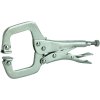Triestino
Daily Driver
On to the next venture...front suspension maintenance on my 128. Wondering what tool folks prefer/use to unscrew the gland nut (as pictured and as found on the top of the strut tube assembly that holds the strut insert/cartridge in-place).
I was planning to build my own tool or buy, but would first like to know what is out there on the market or folks have built that works well.
I was planning to build my own tool or buy, but would first like to know what is out there on the market or folks have built that works well.






